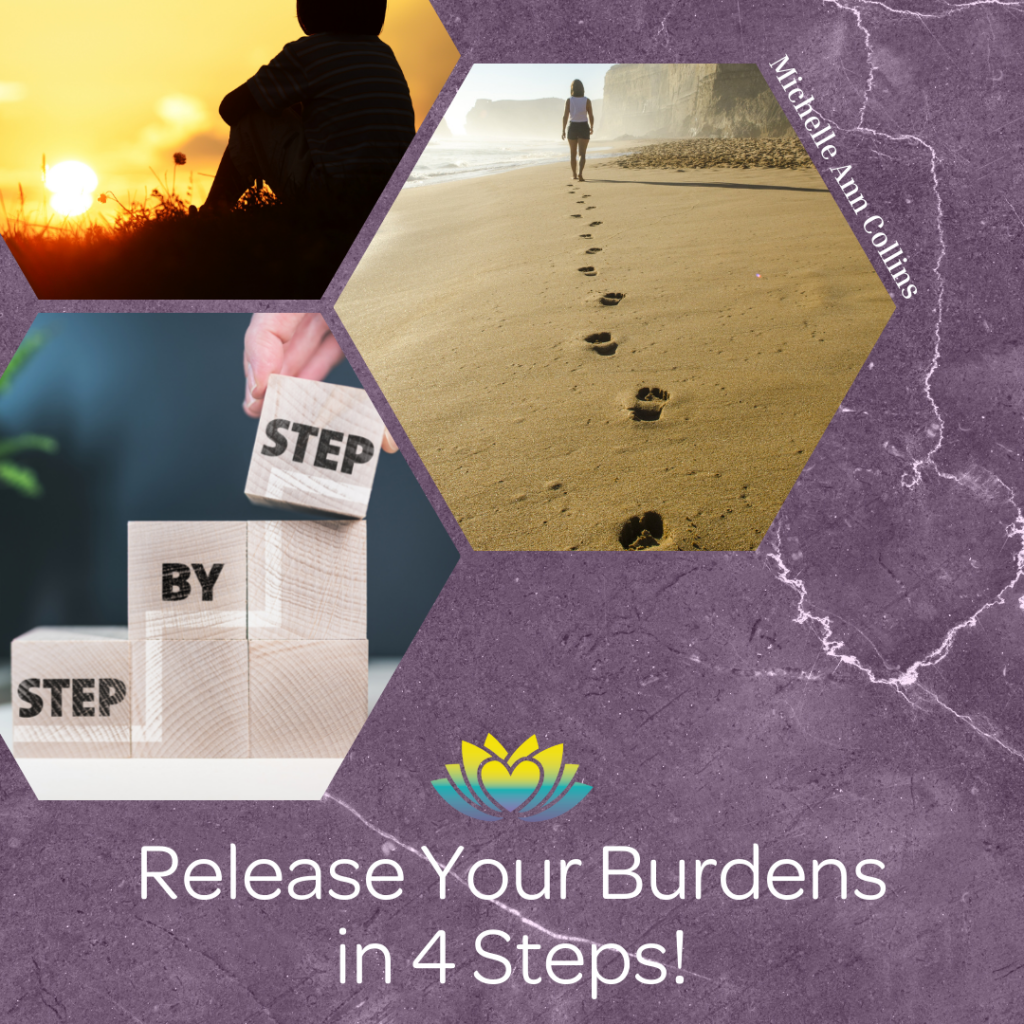You may have felt the heaviness in the air lately. The extreme heat and humidity are partly to blame, but there is an energetic heaviness you are likely feeling and may not even be aware of. We have all been through so much over the last year, months, weeks, it’s easy to feel overwhelmed and weighed down just living in this time. Keep that in mind if you are feeling extra tired or irritable right now and be kind to yourself. Of course, we all have our personal burdens, but the collective heaviness of political and climate crises can have a challenging effect on how we feel.
A few days ago, I was feeling irritable and insecure, as soon as I noticed this, which fortunately was before I acted in a way that wasn’t healthy to me or my relationships, I asked myself, “What is this uncomfortable feeling I’m experiencing?” After a moment of introspection, I identified my emotions as anger mixed with sadness and fear.
Then I explored, “where did these feelings come from?”
I thought about it and realized that I was upset by a rude driver I had interacted with several hours earlier. At the time, I just breathed through the challenge and dove into compassion for him, “Oh he must be suffering something terrible to treat me like that.” But, later when I was still upset, I realized I hadn’t fully processed my feelings. His behavior had triggered me, and because I am a PTSD survivor, fear and trauma were brought up. I used the steps below and let myself feel hurt and anger and fear, and then released it. Try this next time you notice you are feeling emotional discomfort.
Four Steps To Release: feel lighter, healthier, and freer.
1 – Assess
Sometimes we walk around irritated or anxious and we don’t even fully notice it until a challenge comes up and we respond poorly. To avoid behaving in a way you’ll regret, get in touch with yourself, try taking a moment each morning or evening to assess your feelings. You can ask yourself: How am I feeling? Notice anger, frustration, and anxiety, or maybe you’re feeling joyful, happy, or relaxed, good for you!
2 – Explore
Once you have assessed how you are feeling, look back over the last day or the time since your last assessment, and think about what experience or challenge could have brought on those feelings. Sometimes we have an interaction or see something on the news that upsets us, but at the time we don’t even notice it, then later it comes out in the form of unwanted or unhealthy behaviors such as; drinking too much, eating mindlessly, doom scrolling, poor sleep, or fighting with a loved one.
3 – Accept
This can be really challenging, especially to those of you who don’t like feeling strong emotions. One thing that can help is to name it out loud, “I am feeling angry.” Even this simple naming can help you process the emotion and release it. Be careful with your language here, don’t be the emotion, experience it. Instead of “I am angry” say “I am feeling anger,” or “I am experiencing sadness.” This will help you realize it is a temporary situation, a feeling flowing through, rather than part of your identity.
4 – Process
Processing emotions can be easier than you think. Because emotions get stored in the physical body, movement is one of the best ways to process them. Yoga, of course, is one of the best ways to process, because it is a very mindful practice. Being present for deep breathing and challenging poses is very effective. I always feel better after yoga practice, don’t you?
If yoga isn’t your thing, here are a few other ideas of how you can process emotions:
- Move and breathe; walking, dancing, working out, or stretching, any movement works, but it’s best to use mindful movement. Focus your attention on your body while you are moving (no running on the treadmill watching TV). A seated version of release can be as simple as: sweep your arms up overhead while inhaling, and then sigh deeply as you bring your arms back down (repeat for up to a minute if you don’t feel dizzy or breathless). When I’m feeling upset my dog, Happy, gets a lot of long walks.
- If you are angry, sometimes punching a pillow (don’t hurt your wrist) or yelling or stomping can be a good release. I tend to yell the word, “Blah” for some reason that really allows me to release.
- Call someone with whom you feel safe processing your feelings, and share your feelings, let them take some of your burdens, friends can be so uplifting.
- Singing and/or dancing are great ways to move energy through your body.
- Cry! Crying is so underrated. I notice when people cry they quickly rub their eyes and apologize. Crying is one of the best ways to release pent-up sadness or anger, let the tears flow!
When I realized I was still upset from that driving interaction, I called a friend and told her about it, she helped me feel more at ease. Then, I went for a walk, and those two things allowed me to process and release the emotions and go on with my day. It’s bad enough to have been treated rudely, but I was making it worse by holding onto it and letting it ruin the rest of my day.
An old Zen story about two monks walking along a muddy river. When it was time to cross they were approached by a lady who was physically unable to cross and she asked for help. The monks hesitated because their vows include not touching females. The senior monk then picked up the stranded woman and carried her across the river safely. The monks then continued on their way. Three hours later the junior monk, who had been getting more and more upset as they walked, stopped and blurted, “how could you have carried that woman? It is against our vows!” The senior monk replied, “I set her down hours ago, why are you still carrying her?”
I love this story because I can just see the senior monk peacefully enjoying his journey while the junior monk is completely disturbed. A great lesson for us all.
Let me know if those steps above, or any other practice or ritual that you do allows you to release burdens and lighten your load.
Put down your burdens and you will be free!
These steps may need to be repeated, especially if it is a highly challenging situation you need to process. Living with PTSD, I often use these steps and when I do I always feel at least a little bit better.
If you need help processing a difficult time, or you want a more personal work-through of these steps, you can sign up for coaching. I would love the opportunity to help.
In Joy,
Michelle

